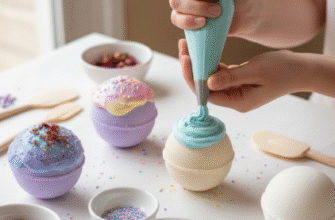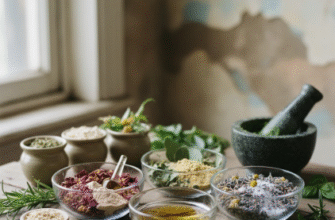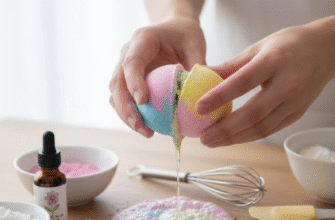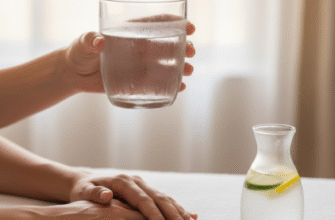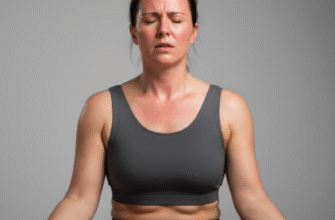Embarking on the journey of do-it-yourself skincare can be incredibly rewarding. It feels empowering to mix up your own concoctions, knowing exactly what goes onto your skin. The allure of natural ingredients and potentially saving money is strong. However, navigating this path requires more than just enthusiasm; it demands respect for ingredients, understanding basic safety principles, and acknowledging potential pitfalls. Before you dive headfirst into whipping up your next face mask or body scrub, let’s solidify some final, crucial tips to ensure your DIY adventures are both safe and genuinely effective, rather than a recipe for irritation or wasted effort.
Prioritize Purity: Hygiene is Non-Negotiable
This might seem obvious, but its importance cannot be overstated. Your kitchen counter, while perhaps clean enough for food prep, operates under different standards than a cosmetic lab. Bacteria, fungi, and molds adore the nutrient-rich, often preservative-free environment of DIY skincare creations. Contamination can turn a beneficial blend into a skin nightmare, leading to breakouts, infections, or allergic reactions.
Creating a Clean Workspace
Before you even think about measuring out ingredients, establish a clean zone. Here’s how:
- Wash Your Hands Thoroughly: Use soap and warm water, scrubbing for at least 20 seconds, just like you would to prevent spreading germs. Consider wearing disposable gloves for an extra layer of protection, especially if handling ingredients directly.
- Sanitize Surfaces: Wipe down your counter or workspace with an appropriate disinfectant. Ensure it’s completely dry before starting.
- Sterilize Equipment: Bowls, spoons, whisks, spatulas, and especially your final storage containers must be meticulously cleaned and ideally sterilized. Washing with hot, soapy water is a good start. You can further sanitize non-plastic items by boiling them in water for several minutes (like canning jars) or wiping them down with rubbing alcohol (isopropyl alcohol 70%) and letting them air dry completely. Ensure no alcohol residue remains.
- Use Dedicated Tools: Avoid using the same utensils you use for cooking. Invest in a small set of bowls, spoons, and spatulas designated solely for your DIY skincare projects to prevent cross-contamination with food residues or strong scents.
Treat your DIY skincare prep like a mini-laboratory session. Every step you take to minimize contamination significantly increases the safety and potential shelf life of your product.
Ingredient Intelligence: Know What You’re Using
The internet overflows with tempting DIY recipes featuring everything from lemon juice and baking soda to exotic oils and potent essential oils. However, not everything natural is inherently safe or beneficial for skin, especially when used improperly. Understanding your ingredients is paramount.
Research Beyond the Recipe
Don’t just follow a recipe blindly. Take the time to research each ingredient:
- Understand its Properties: What is it supposed to do for the skin? Is it an exfoliant, a humectant, an emollient, an astringent?
- Check pH Levels: Some popular DIY ingredients have pH levels that are drastically different from the skin’s natural slightly acidic mantle (around 4.5-5.5). Ingredients like pure lemon juice (pH ~2) or baking soda (pH ~9) can disrupt this barrier, leading to irritation, sensitivity, and damage over time.
- Know Potential Sensitizers/Irritants: Many natural ingredients, including essential oils (like citrus oils, cinnamon, clove) and even common items like raw honey or certain spices, can cause contact dermatitis or photosensitivity (increased sensitivity to sunlight).
- Source Quality Ingredients: Where you get your ingredients matters. Use fresh, high-quality components. Be cautious with food-grade items unless you’re certain they are suitable and free from contaminants problematic for skin application. For oils and butters, look for reputable suppliers who specify purity and extraction methods.
Remember, ‘natural’ does not automatically mean ‘safe’ or ‘better’. Poison ivy is natural, but you wouldn’t put it on your face. Apply the same critical thinking to your DIY skincare ingredients.
Important Note on Potent Ingredients: Be extremely cautious with ingredients known for high potency or potential irritation. This includes pure essential oils (always dilute properly!), strong acids (like undiluted vinegar or lemon juice), abrasive physical exfoliants (like large sugar crystals or crushed nut shells), and spices. Incorrect usage can lead to chemical burns, micro-tears, or severe allergic reactions. When in doubt, leave it out or consult reliable formulation resources, not just random blogs.
Patch Test Power: Don’t Skip This Step
You’ve cleaned your space, researched your ingredients, and mixed your creation. The temptation is to slather it all over your face immediately. Resist! Patch testing is your essential safety net against widespread adverse reactions.
How to Patch Test Effectively
A patch test helps determine if your skin will react negatively to a new product before you apply it more broadly.
- Choose a Discreet Area: Select a small, inconspicuous patch of skin similar in sensitivity to where you’ll use the product. Good spots include the inside of your wrist or elbow, or behind your ear. For facial products, a small area along the jawline can work well.
- Apply a Small Amount: Dab a tiny amount of the finished product onto the chosen area.
- Wait and Observe: Leave the product on for the intended duration (e.g., 10-15 minutes for a mask) or, for leave-on products, cover it with a bandage and leave it for 24-48 hours if possible (checking periodically). Pay attention to how your skin feels during application as well.
- Check for Reactions: After the time is up (or during, if irritation occurs sooner), rinse the area thoroughly. Look for any signs of redness, itching, burning, bumps, or swelling. Check again over the next 24-48 hours, as some reactions can be delayed.
- If Reaction Occurs: Discontinue use immediately. Do not apply the product elsewhere. Note the ingredients used so you might identify the culprit in the future.
Even if you’ve used the individual ingredients before, combining them can sometimes create unexpected reactions.

